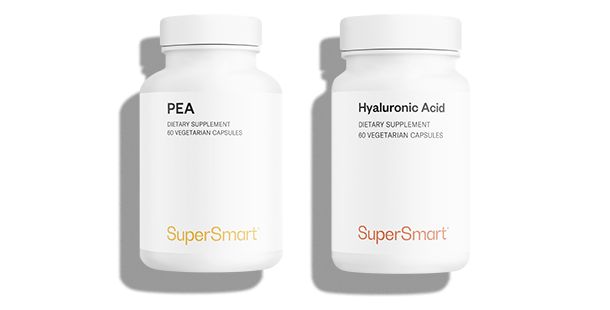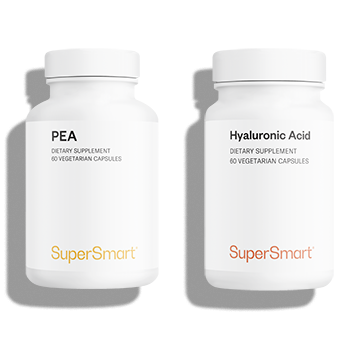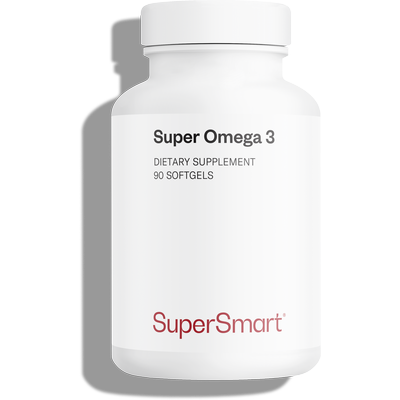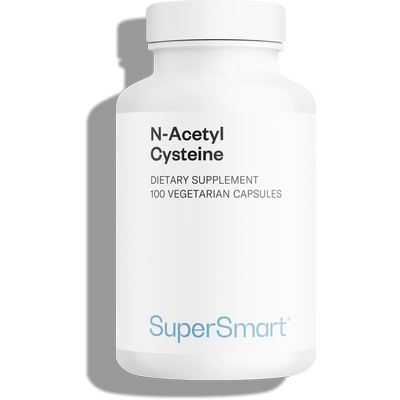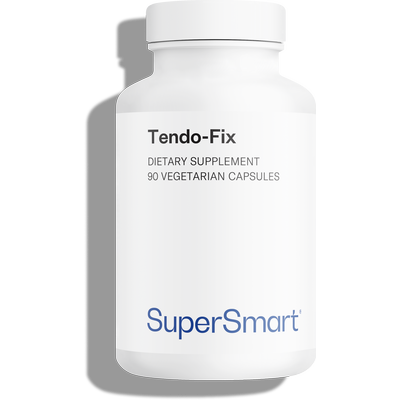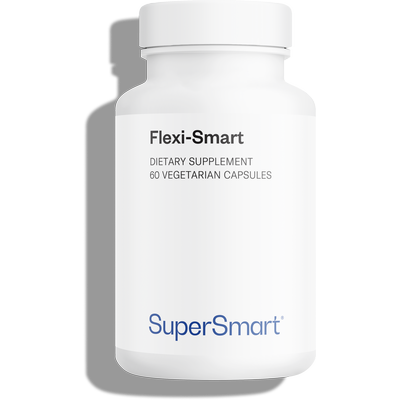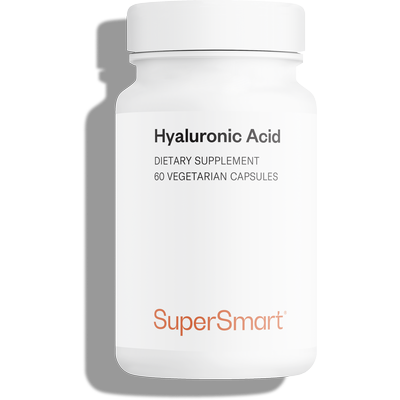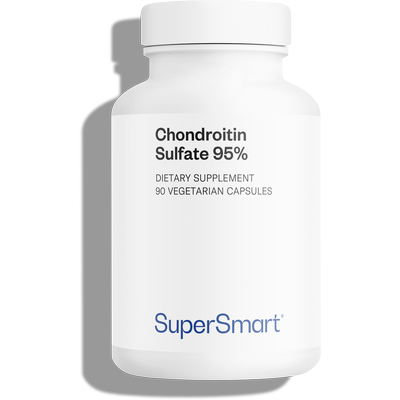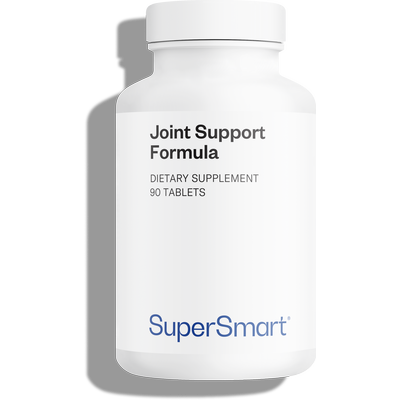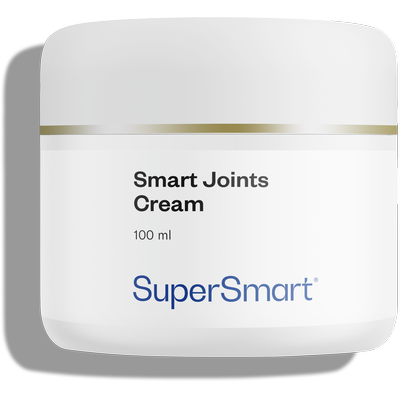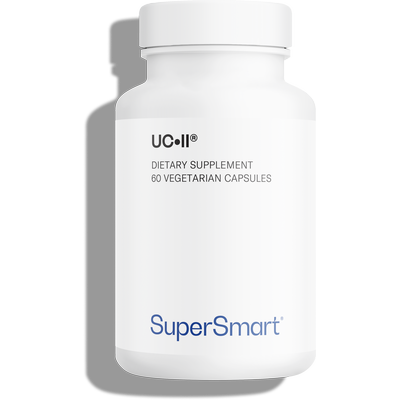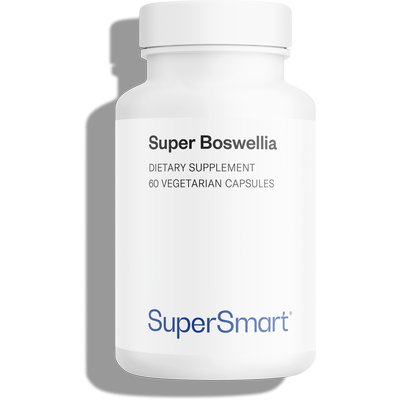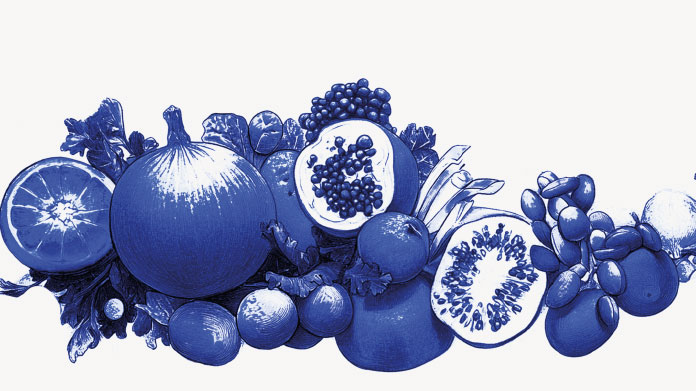In stock
Hyaluronic Acid + P.E.A.
Complete your selection
What is in Hyaluronic Acid + P.E.A.
Any questions?
Our team of nutrition experts and scientists has the answers.
The following protocol is usually recommended for a course of PEA:
- 3 capsules a day, one with each main meal, for the first two months.
- 2 capsules a day for the following two months.
- 1 capsule a day thereafter until the end of the supplementation period.
If necessary, however, PEA can be taken on a continuing basis.
It’s advisable, throughout the supplementation period, to try to follow the measures below:
- Regular exercise whenever possible.
- Acupuncture.
- Massage therapy.
- Relaxation techniques such as meditation or visualisation.
Following ingestion, PEA is rapidly distributed throughout the body. One study even showed that some of the palmitoylethanolamide molecules reach the brain (3), with a relatively diverse distribution (the cerebral cortex, hypothalamus and white matter are the areas in which most PEA is found).
Are there any contraindications associated with taking PEA?
Over the course of twelve clinical studies conducted since 1972, researchers have not found PEA supplementation to produce any particular side-effects (4) - hardly surprising given that palmitoylethanolamide is produced naturally by the body’s cells.
Nor have any drug interactions been identified to date. However, anyone suffering from kidney or liver problems is advised to start with 400mg daily (1 capsule) and gradually increase the dose over subsequent weeks.
These safety indications only apply to supplements made from pharmaceutical grade palmitoylethanolamide such as our product, PEA. Avoid palmitoylethanolamide of unknown origin to prevent any nasty surprises.
Alongside supplementation with hyaluronic acid, the following steps are highly recommended:
- Gradually increase the time you spend exercising every day.
- Avoid making too many repetitive movements or putting too much strain on painful joints.
- Don’t stay immobile for any length of time: regularly change position to reduce muscle and joint stiffness.
- Consider physiotherapy or phytotherapy for reducing pain. For example, the boswellic acid in the natural supplement Super Boswellia is available to buy at Supersmart and helps to reduce joint pain and inflammation.
This product’s capsules are composed of HPMC (hydroxypropyl methylcellulose), a plant substance derived from cellulose. HPMC is widely used for medicines and dietary supplements. It contains no animal ingredients, is recognised as safe by health authorities and is considered more sustainable than synthetic alternatives.
Hyaluronic acid is obtained in two different ways:
- By extraction from rooster combs, after which it is crushed, chemically treated and purified.
- By bacterial fermentation: strands of hyaluronic acid are produced from innocuous bacteria.
Hyaluronic Acid 150 mg is made using the second of these methods. It is therefore 100% suitable for vegetarians and vegans and offers guaranteed, controlled optimal purity.
The human body is itself able to produce hyaluronic acid via a mechanism discovered around 20 years ago by Professor Paul Weigel and his team. Synthesis occurs at the inner side of plasma membranes and is a fast, effective and unique process.
It was long believed that when taken orally, hyaluronic acid had no real clinical benefit because of its particularly high molecular weight. In fact, the bioavailability of orally-administered hyaluronic acid is well-documented (3).
Animal studies, which were somewhat late in investigating this question, have shown that when administered orally, part of the hyaluronic acid molecules are perfectly capable of reaching the bloodstream and various body tissues. This discovery concurs with the recorded effects of hyaluronic acid supplementation in horses and other animals (4-6) as well as in humans (7-8).
It’s believed that these molecules cross the gut wall via micro-particles (9-10) and that part of them reaches peripheral tissues such as the skin and joints without any difficulty. The transport of hyaluronic acid in the body is, in any case, a completely normal physiological process (11-12).
It’s therefore entirely appropriate that hyaluronic acid should be available in dietary supplement form (13-15). Supplements represent an alternative to the HA injections given by health professionals and recommended by the European League against Rheumatism (EULAR).
The life of a hyaluronic acid molecule is relatively short, ranging from 12 hours to a few days. It’s thought that a third of the body’s total hyaluronic acid composition is renewed each day under normal circumstances. A daily dose of two 150mg capsules is therefore recommended.
This dose is not associated with any adverse side-effects, whether taken for short periods (two weeks) or indeed for up to 12 months.
Dr Nahon’s view
The huge advantage of this method is that it offers an alternative to painful and sometimes dreaded injections. Oral administration of hyaluronic acid is simple and safe and produces the same results as those demonstrated in recent scientific studies.
It’s worth noting that there is no difference between men and women in terms of the treatment’s activity.
This product’s capsules are made of pullulan, a natural polysaccharide obtained by fermenting tapioca or corn. Pullulan contains no animal ingredients and provides an excellent barrier to oxygen, helping to preserve the integrity of the capsule’s ingredients. It is also an eco-friendly alternative to synthetic materials.
Need help?
You may also like

